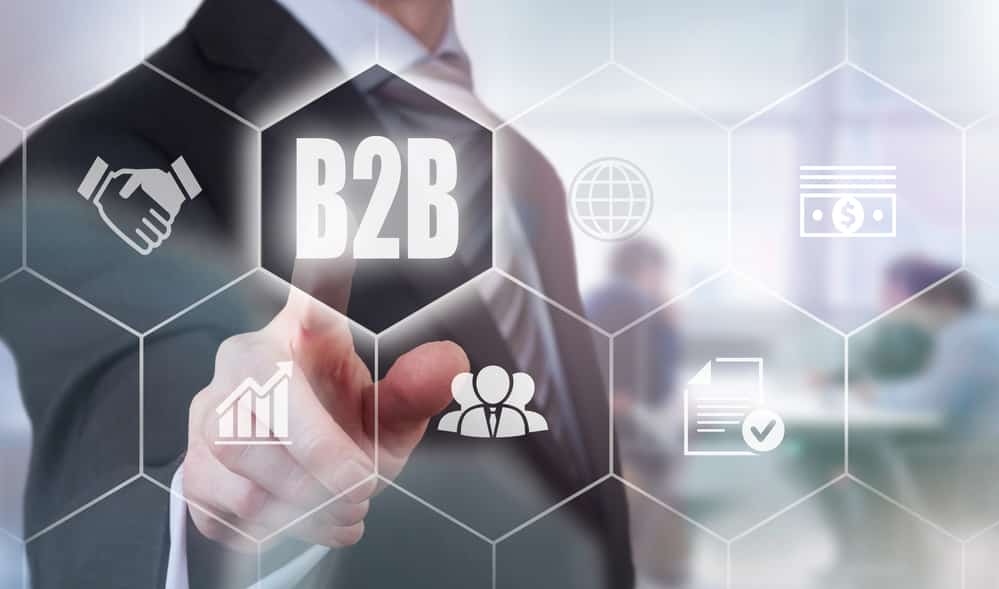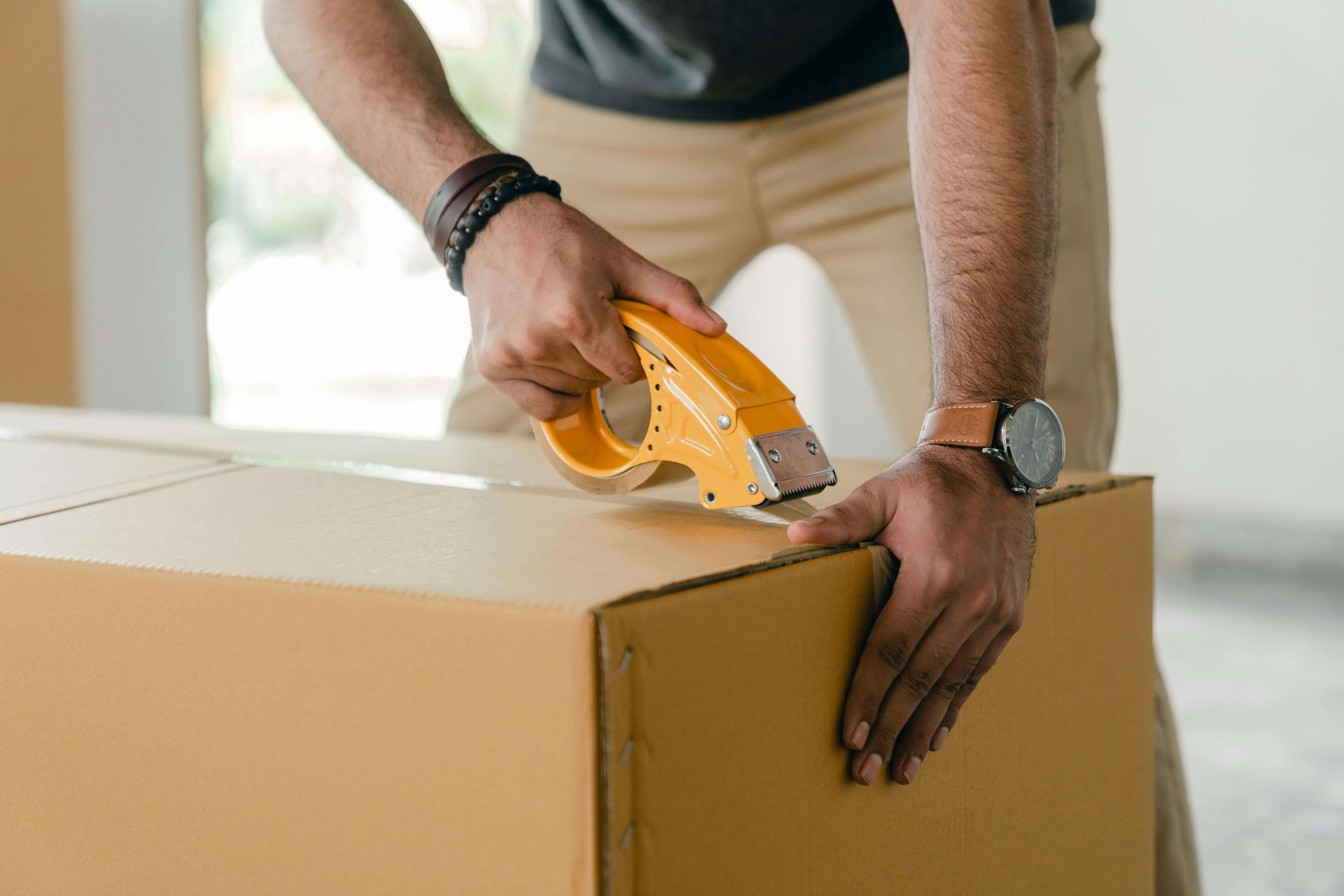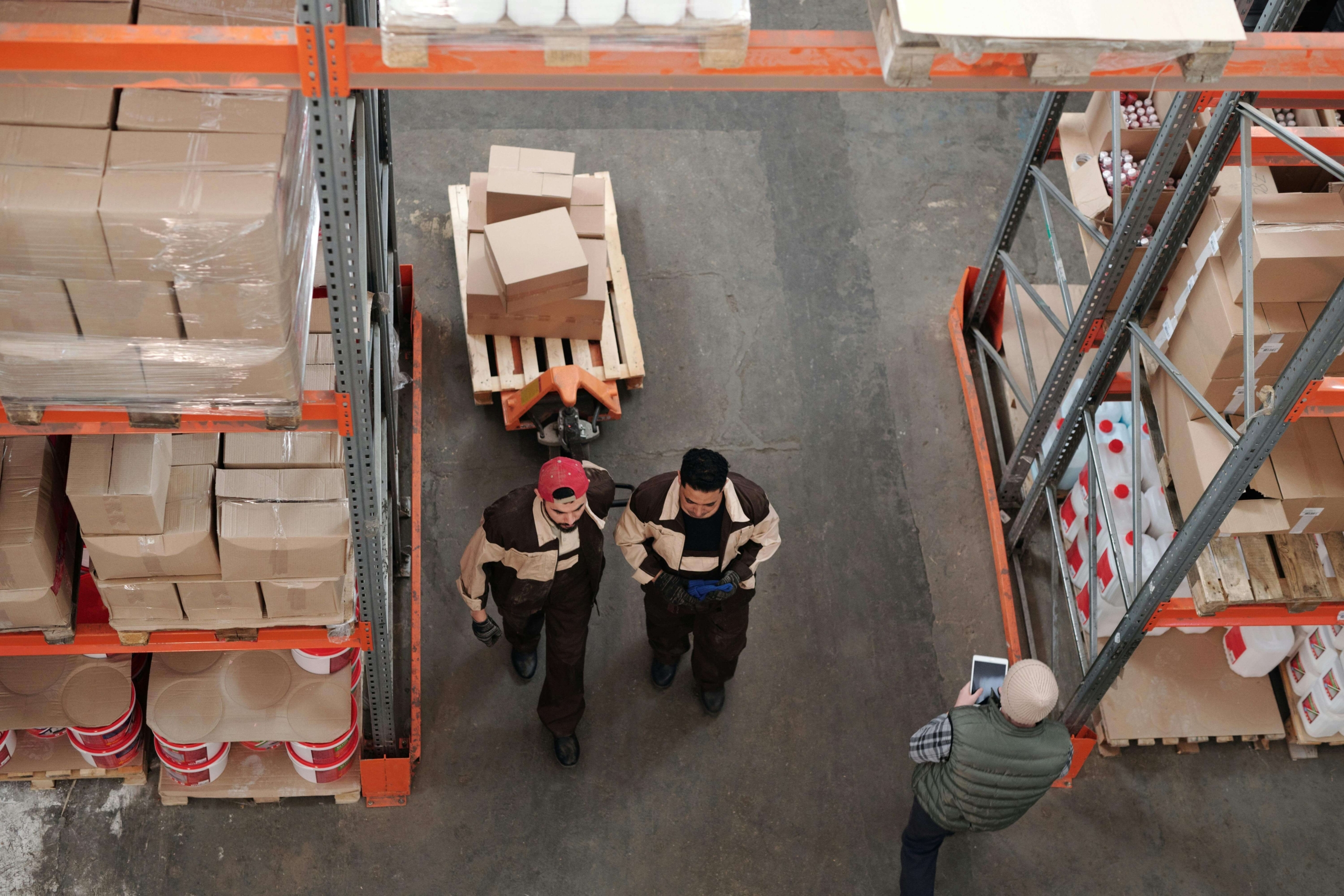Reverse Logistics Challenges in the B2B Space

Reverse logistics challenges can be significant for businesses selling to other businesses (B2B). Handling returns, product repairs, or sending things back can get tricky. These problems differ from those in the consumer space and are often more challenging than similar situations in B2C.
This article will examine the main challenges B2B companies face with reverse logistics. We’ll talk about why it’s hard to deal with returns, keep track of them, and still make customers happy. We’ll also share some ideas on how to make things work better.
Understanding these challenges can help B2B companies do well in today’s market. Let’s explore the different problems they face and some smart ways to solve them.
Complex Returns Changing the Typical Returns Process
In the B2B world, complex returns are becoming more common. They can shake up the usual way of handling items coming back. Unlike simple consumer returns, B2B returns can be far larger. They often involve large amounts of products, expensive equipment, or custom-made items. This makes the process much harder to manage.
For example, a company might need to return a whole shipment of parts that don’t work right. Or a business might send back a big machine that needs fixing. These situations are trickier than just sending back a shirt that doesn’t fit.
Here’s why B2B returns are more complex:
- More paperwork: There may be many forms and documents to fill out.
- Special handling: Some items need careful packaging or special trucks to move them.
- Testing and checking: Returned products often need to be looked at closely to see what’s wrong.
- Different options: Companies might repair or recycle returned items instead of reselling them.
These complex returns are changing how B2B companies handle the whole process. They need better systems and trained staff to deal with these challenges. Understanding and preparing for these complex returns can save businesses money. It can also help them keep their customers happy.

Keeping Operation Costs Low
One significant challenge in reverse logistics is keeping costs down. B2B companies need to handle returns well, but they also need to stay profitable. It’s like trying to balance on a seesaw – you want to make customers happy on one side and save money on the other.
Here are some ways B2B companies try to keep costs low in reverse logistics:
- Smart planning: Figure out the best ways to move returned items. By doing so, companies can save on shipping costs.
- Using technology: Technology can help your business help track returns. This software makes the whole process faster.
- Training workers: Employees should understand exactly what to do in various situations. When they do, they can work quicker and make fewer mistakes.
- Fixing things locally: Sometimes, it’s cheaper to fix returned items nearby. This way you avoid the expense of shipping them long distances.
- Reusing materials: Companies can save money by reusing packing materials when possible.
By focusing on these areas, B2B businesses can handle returns without overspending. This helps improve margins and stay competitive in the market. It’s all about finding clever ways to do more with less. Dealing with returns doesn’t have to eat up your profits.
Achieving Sustainability Goals with Returns
More and more companies are focusing on sustainability these days. This means they want to be kinder to the environment while still running their business. Reverse logistics plays a big part in this effort.
When B2B companies handle returns well, it can contribute to their sustainability goals. Here’s how:
- Reuse and recycle: Avoid throwing away returned items. Instead, fix them up to use again or use their parts in repairs or new products.
- Less waste: Carefully check returned products to figure out which parts are still good to use. This means less ends up in the trash.
- Greener shipping: Plan return shipments better so that more items come back at one time. This practice can mean fewer trucks on the road, which is good for the environment.
- Energy-saving warehouses: Outdated warehouses use vast amounts of energy. Solve this problem with better lighting and temperature control in your warehouses.
- Educate customers: B2B companies can train business customers on returns. They can then return items in ways that are better for the planet.
Focusing on sustainability in reverse logistics isn’t just good for the Earth. It can also save money and make customers happy. It’s a win-win situation that shows a company cares about more than profits.
B2B businesses that work in these areas can make their return processes greener. It can boost the company’s image in the eyes of eco-conscious customers.
Lack of Visibility in Reverse Logistics Process
One of the biggest headaches in reverse logistics is visibility. You often can’t see what’s happening with returns until they arrive. Some of the problems that stem from it are:
- Lost items: Without good tracking, returned products can get lost in the shuffle.
- Slow processing: When you can’t see where things are, it takes longer to handle returns.
- Unhappy customers: Customers become frustrated when they don’t know where their return is.
- Wasted money: Not knowing what’s coming back makes planning hard and can cost more in the long run.
Companies are using special tools to shine a light on this problem. One helpful method is using FSN analysis techniques. FSN stands for Fast-moving, Slow-moving, and Non-moving. This strategy helps sort returned items based on how quickly they usually move through the system.
Other ways to improve visibility include:
- Using barcodes or RFID tags to track items
- Setting up computer systems that update in real-time
- Training staff to input data correctly and quickly
Making the reverse logistics process more visible helps B2B companies work faster. They can also save money and keep their customers happier. It’s like turning on the lights in a dark room. Suddenly, everything becomes clearer and easier to manage.
Timely & Efficient Transportation & Delivery
Getting returned items from point A to point B quickly and cheaply is challenging. Unlike regular shipping, returns often don’t follow a set path. This can make transportation tricky and expensive.
Some challenges in transporting returns include:
- Unpredictable volumes: It’s hard to know how many returns will come in each day.
- Different sizes and types of items: Returns can range from small parts to large machinery.
- Special handling needs: Some returns might need careful packaging or temperature control.
- Coordinating pickups: Arranging to collect returns from various locations can be complicated.
To tackle these issues, B2B companies are trying new approaches:
- Using smart routing software to plan the best paths for returns
- Partnering with specialized logistics companies
- Setting up regional return centers to shorten travel distances
- Combining return shipments with regular deliveries to save on costs
Last Mile Delivery Issues
Last mile delivery is a specific challenge in reverse logistics & is the final step of getting a returned item back to the warehouse or repair center. It’s often the most expensive and time-consuming part of the journey.
Last mile issues in reverse logistics include:
- Scattered pickup locations: Returns might need to be collected from many different places.
- Traffic and urban congestion: Getting around busy areas can slow things down.
- Failed pickup attempts: Delays occur if no one is available to hand over the return.
- Handling and storage: Drivers must properly handle returned items to avoid damage.
B2B companies should focus on solving these transportation and last mile delivery challenges. Doing so makes reverse logistics faster and more cost-effective. This helps keep the whole return process running smoothly.
Recovering Value from Returns
When products come back, B2B companies face a big question: How can we get the most value out of these returns? It’s not just about getting items back. It’s also about turning those returns into something useful or valuable.
There are several ways businesses try to recover value:
- Reselling: Some returned items might still be in good shape and can be sold again.
- Refurbishing: Fixing up products to make them like new.
- Recycling: Breaking down items to reuse their materials.
- Donating: Giving away products that can’t be resold but are still usable.
The challenge is figuring out the best option for each return. This decision can affect the company’s bottom line. It also impacts the returns experience for their customers.
To make the most of returns, companies are:
- Using software to quickly assess the condition of returned items
- Training staff to spot opportunities for value recovery
- Setting up partnerships with recycling or refurbishing specialists
- Creating clear guidelines for what to do with different types of returns
Focusing on value recovery helps B2B businesses…
- Reduce waste and be more environmentally friendly
- Save money on new materials
- Create new revenue streams from refurbished or recycled products
- Improve customer satisfaction by handling returns efficiently
The key is to view returns not as a problem, but as an opportunity. With the right approach, what seems like a loss can actually become a gain. This positive outlook on returns can transform the entire reverse logistics process. It becomes a valuable part of the business instead of just a necessary cost.

Identifying & Preventing Return Fraud
Return fraud is a serious problem that can cost B2B companies a lot of money. It happens when someone tries to cheat the system. They may attempt to return items unfairly or dishonestly. Companies don’t just lose money on fake returns. Fraud can also hurt relationships with honest customers.
Some common types of return fraud include:
- Returning stolen goods
- Using fake receipts
- Sending back empty boxes
- Swapping old or broken parts into a product before returning it
To fight return fraud, companies are using several strategies:
- Set up clear return policies: This helps everyone understand the rules.
- Use special labels or tags: These can show if an item has been used or tampered with.
- Train staff to spot fraud: Employees can learn to recognize suspicious returns.
- Use data analysis: Looking at return patterns can help identify potential fraud.
Preventing return fraud is important because it:
- Saves money for the company
- Keeps prices fair for honest customers
- Protects the company’s reputation
- Maintains good relationships with suppliers and partners
There’s no question that it’s crucial to stop fraud. But companies must keep the return process simple for honest customers. Finding the right balance is key to a good return experience for everyone.
B2B companies can improve returns by tackling return fraud head-on. They can create a fairer, more efficient reverse logistics system. A transparent and effective system protects the bottom line and builds trust with customers and partners.
Warehouse Management: Maximizing Space
Good warehouse management is crucial when dealing with returns. As products come back, they need a place to go. But space in warehouses is valuable, and returns can take up a lot of room if not handled well.
Some challenges in managing warehouse space for returns include:
- Unpredictable volume: It’s hard to know how many returns will come in at any time
- Different types of items: Returns might be all shapes and sizes, making them tricky to store
- Sorting and processing: Returned items must be checked and sorted, which takes space
- Holding periods: Some returns might need to be kept for a while before deciding what to do with them
To make the most of warehouse space, companies are trying these strategies:
- Vertical space: Stacking items safely to use all available height
- Flexible storage solutions: Adjustable shelves and bins that can change with needs
- Zone-based organization: Keeping similar returns together for easier processing
- Just-in-time processing: Dealing with returns quickly to avoid long-term storage
Good warehouse management for returns can lead to:
- Lower storage costs
- Faster processing times
- Easier tracking of returned items
- More efficient use of staff time
B2B companies can revamp their returns with smart warehouse management. Warehouses go from chaotic storage spaces into well-organized, efficient parts of the operation. This saves money and helps speed up the entire returns process. It can also make customers and partners happier.

Inventory Management: Getting Returns In & Out
Managing returned inventory is like juggling. You need to keep track of what’s coming in, going out, and staying put. For B2B companies, this can be extra tricky because of the volume and variety of items being returned.
Some challenges in managing return inventory include:
- Keeping accurate counts: It’s easy to lose track when items are moving in and out
- Deciding what to do with returns: Some items might be resold, others repaired or recycled
- Matching returns to original orders: This helps with tracking and processing
- Balancing storage space: You need room for returns without overcrowding regular stock
To handle these challenges, companies are using these strategies:
- Digital tracking systems: Using computers to keep real-time counts of returned items
- Clear labeling: Making sure every return is properly marked and easy to identify
- Regular audits: Checking inventory often to make sure counts are correct
- Setting processing priorities: Dealing with high-value or time-sensitive returns first
Good inventory management for returns can help by:
- Reducing errors in tracking and processing
- Speeding up the return process
- Saving money on storage and handling
- Improving customer satisfaction with faster turnaround times
B2B companies need to get a handle on return inventory management. Doing so can turn a potential headache into a smooth-running part of their business. It’s all about knowing what you have, where it is, and what needs to happen next. When done right, it can improve the whole returns process. Returns become faster, cheaper, and less stressful for everyone involved.
Consistent Customer Satisfaction & Managing Customer Expectations
Keeping customers happy is crucial in B2B relationships. This principle is especially true when it comes to returns. Customer satisfaction can make or break long-term business partnerships. When handling returns, don’t just think about taking back products. Consider that you should meet or exceed what customers expect from the process.
Some challenges in managing customer expectations for returns include:
- Different expectations: Your customers are all different. Each might have their own idea of what a good return process looks like.
- Complex products: Some returns might involve complicated items that take time to process.
- Communication gaps: Customers want to know what’s happening with their return. They want visibility of every step in real time.
- Balancing speed and accuracy: Customers want their returns handled quickly but also correctly
To improve customer satisfaction with returns, companies are trying these approaches:
- Clear return policies: Make sure customers know what to expect from the start.
- Regular updates: Keep your customers informed on the status of their return.
- Flexible options: Offer different ways to handle returns based on customer needs.
- Quick problem-solving: Promptly address any issues during the return process promptly.
Benefits of focusing on customer satisfaction in returns include:
- Stronger business relationships
- Increased customer loyalty
- Positive word-of-mouth recommendations
- Fewer complaints and disputes
Put customer needs at the center of the return process. By doing so, B2B companies can turn a potentially negative experience into a positive one. It’s about showing customers they’re valued and their needs are understood. When done right, a good return experience can actually strengthen business relationships. It can also lead to more sales in the future.
Collaboration & Communication with Vendors & Partners
In B2B reverse logistics, working with vendors and partners is key to a smooth return process. Good teamwork can make returns faster, cheaper, and less stressful for everyone involved.
Some challenges in collaborating on returns include:
- Different systems: Each company might use different software or methods.
- Sharing information: Make sure everyone has the data they need when they need it.
- Coordinating actions: Get all parties to work together on complex returns.
- Meeting various needs: Carefully balance the requirements of different partners.
ReverseLogix is a powerful solution for these problems. It’s a cloud-based platform that helps companies work together better. ReverseLogix gives everyone one system to use. This means no more juggling different tools. Everyone can see the latest info about returns right away.
ReverseLogix is also very flexible. It can be set up to fit what each company needs. The system can match how a company already works. Or it can help create new, better ways of working. It also has tools to help partners talk to each other easily. This means fewer mix-ups and delays.
ReverseLogix can help B2B companies with their returns. It cuts down on confusion between partners. This leads to smoother teamwork. It also makes the return process faster. Companies can handle returns more quickly. The system helps reduce mistakes, too. It stops people from doing the same work twice.
Think of ReverseLogix as a digital meeting room. All the people involved in returns can work together here. It makes managing returns simpler and more team-friendly. With these better tools, B2B companies can handle returns more easily. This leads to happier customers and better business relationships.
Schedule a demo to learn more about how ReverseLogix can become the solution you need for all your B2B reverse logistics challenges.
